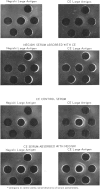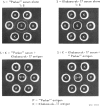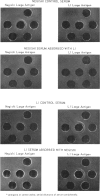Abstract
This paper is a report on further studies of the antigenic relationships among viruses of the Group B tick-borne complex, carried out by the haemagglutination-inhibition (HI), complement-fixation, absorption-HI and diffusion-in-gel techniques. Earlier work has been extended to include Powassan and Negishi viruses.
Comparisons of a number of strains of tick-borne viruses have revealed inter-strain variation only in the case of Omsk haemorrhagic fever virus, where two subtypes are distinguishable.
This recognition of subtypes of Omsk virus has led the author to review the concept that Central European encephalitis and Russian spring-summer encephalitis viruses are distinct entities. On the basis of their close relationship, as well as new information on vectors and geographical range, she suggests that they be considered variant subtypes of one virus, designated Group B tick-borne encephalitis virus.
Full text
PDF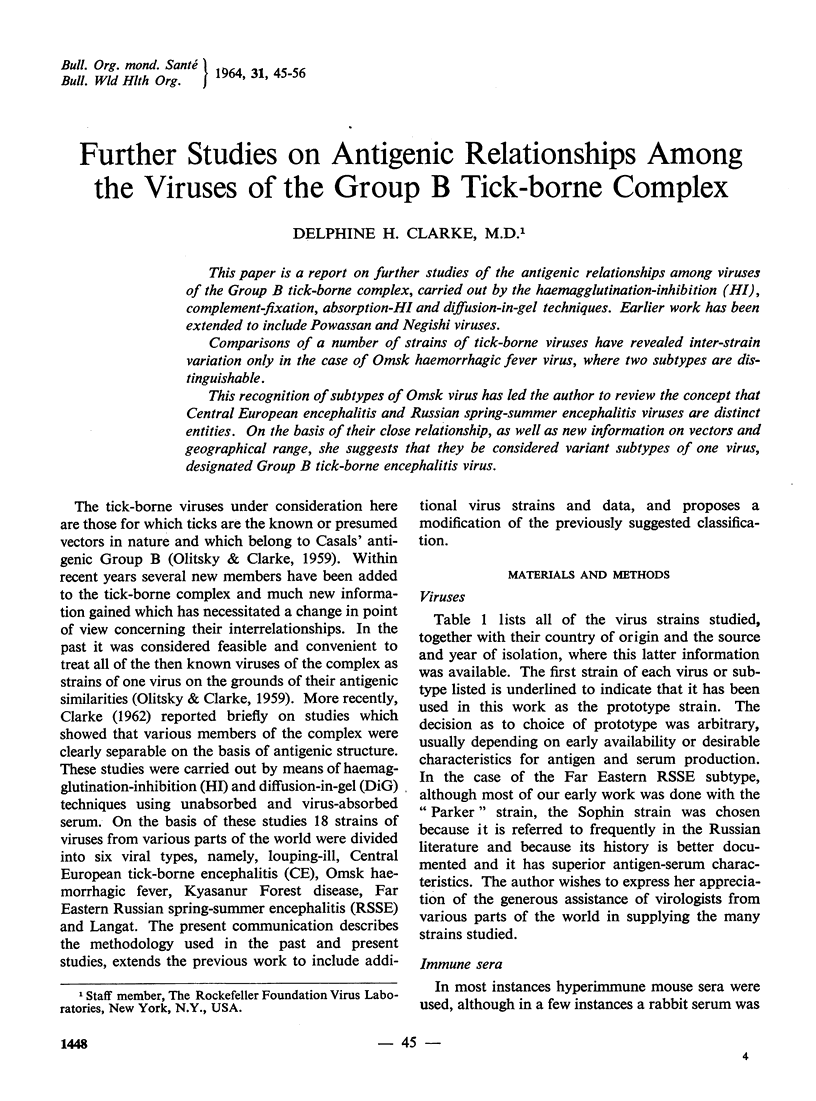
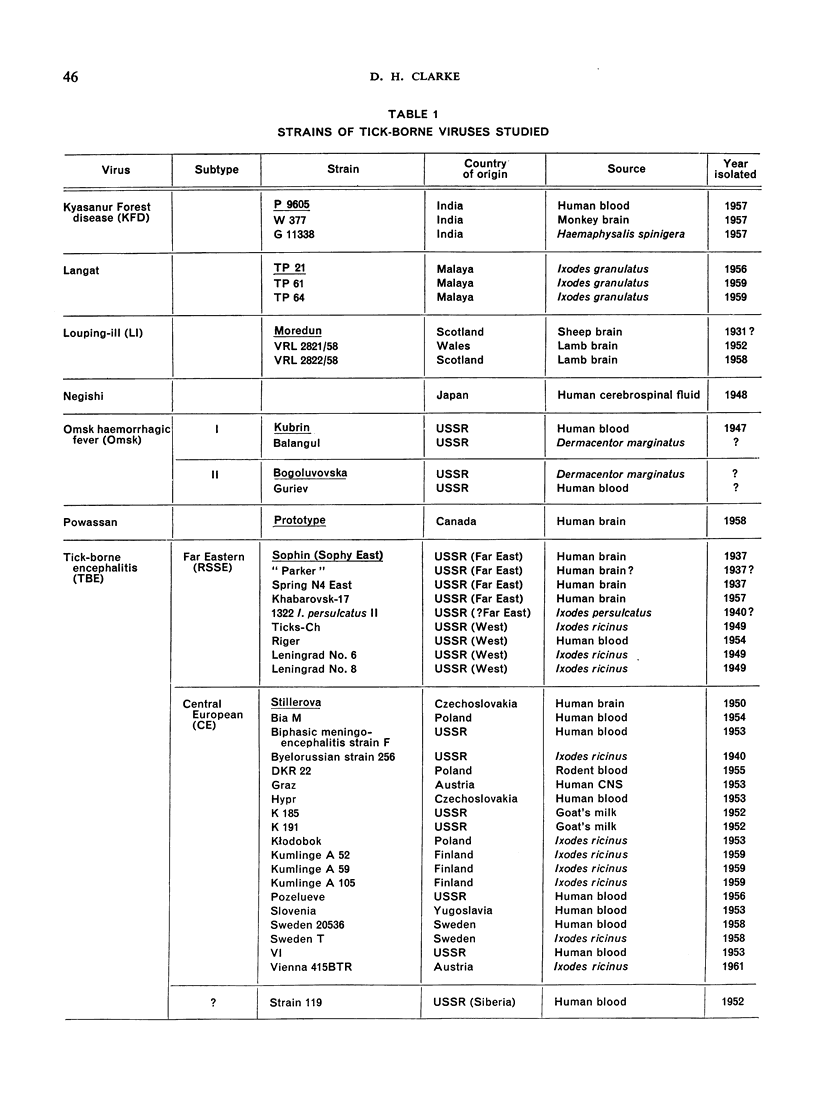
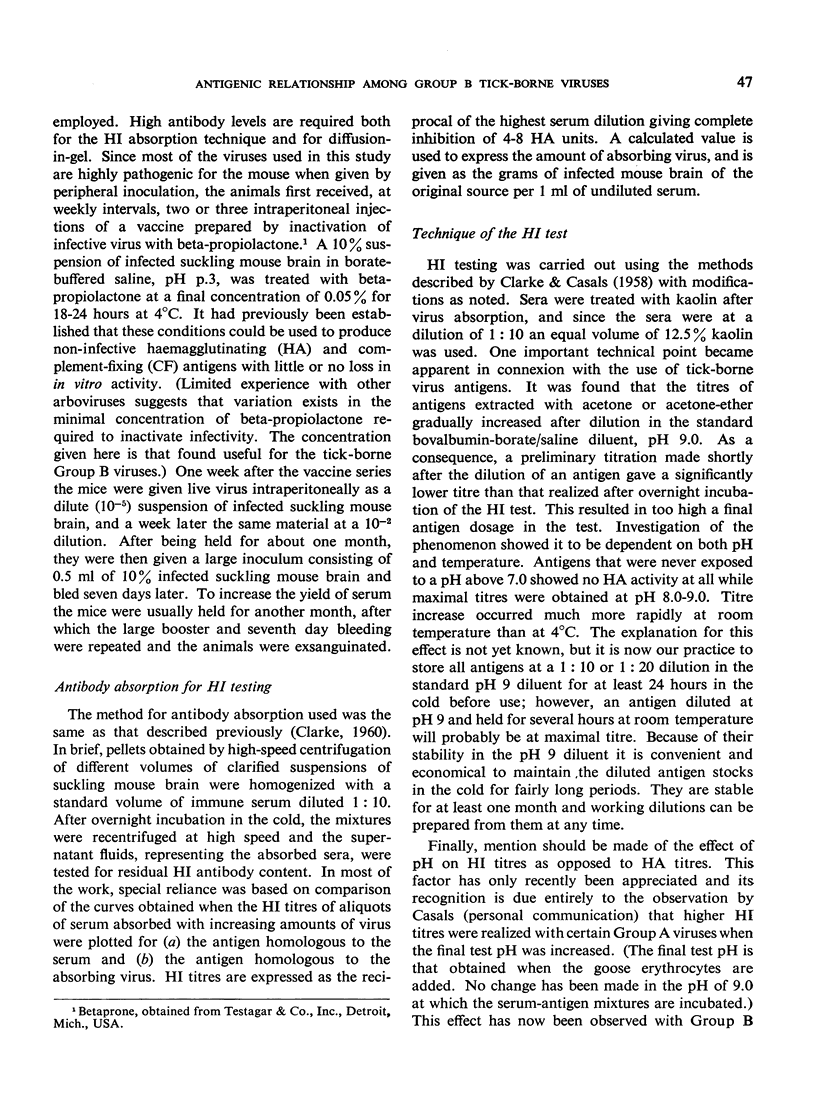
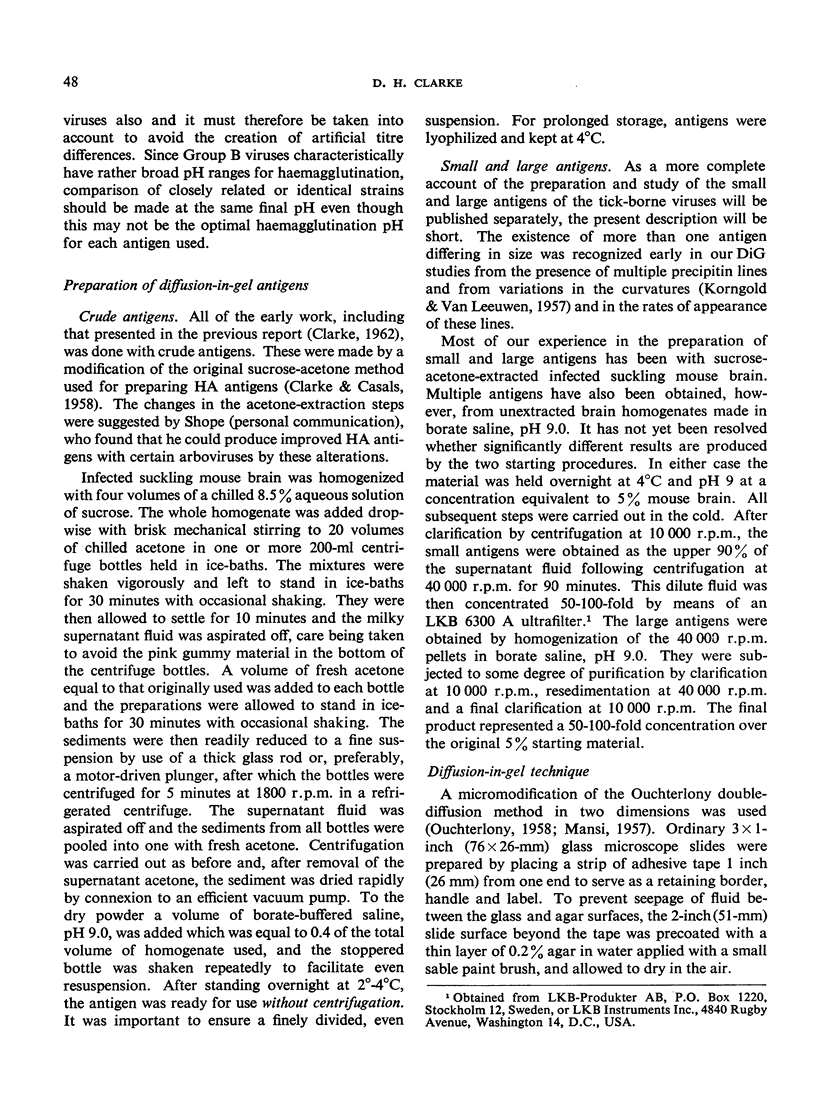
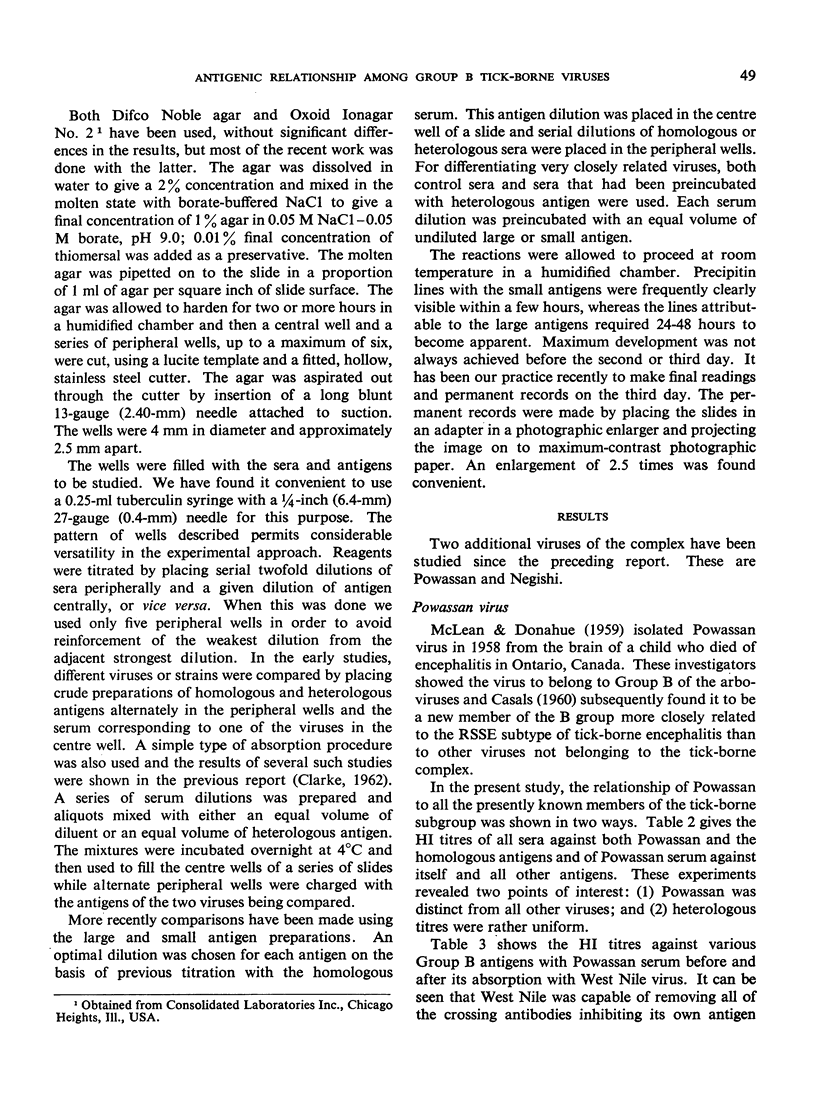

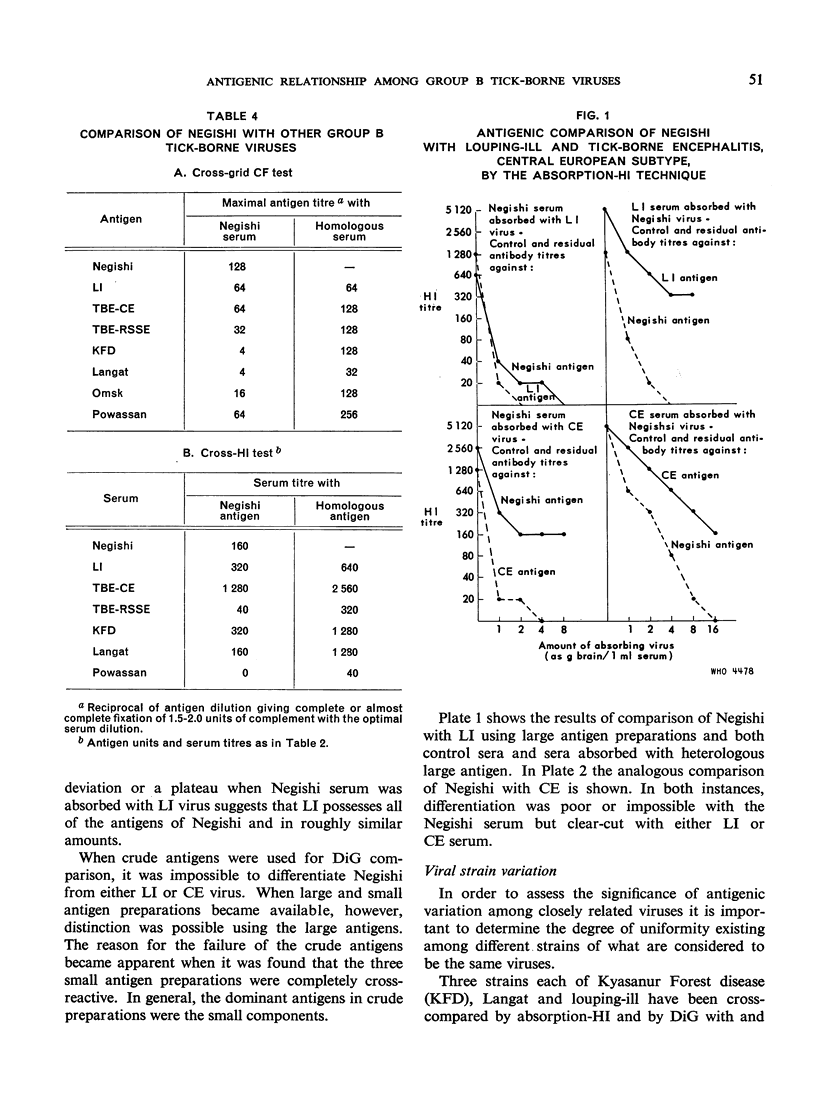
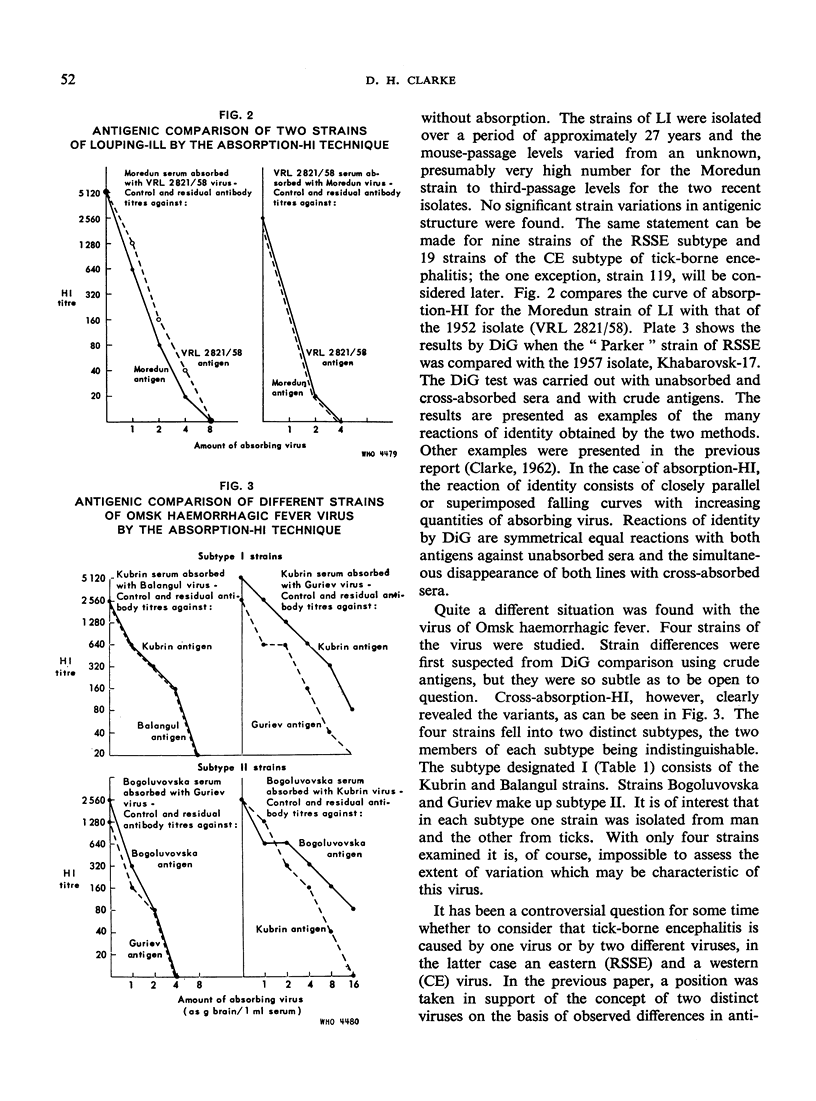
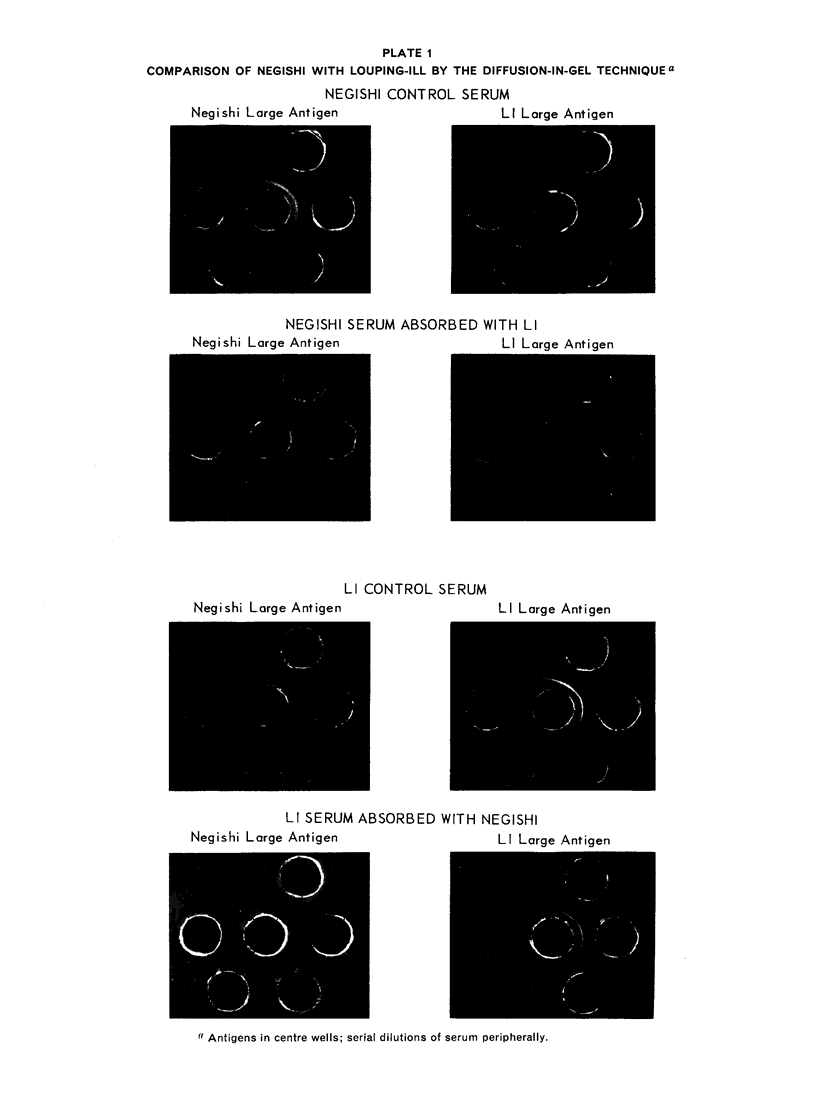
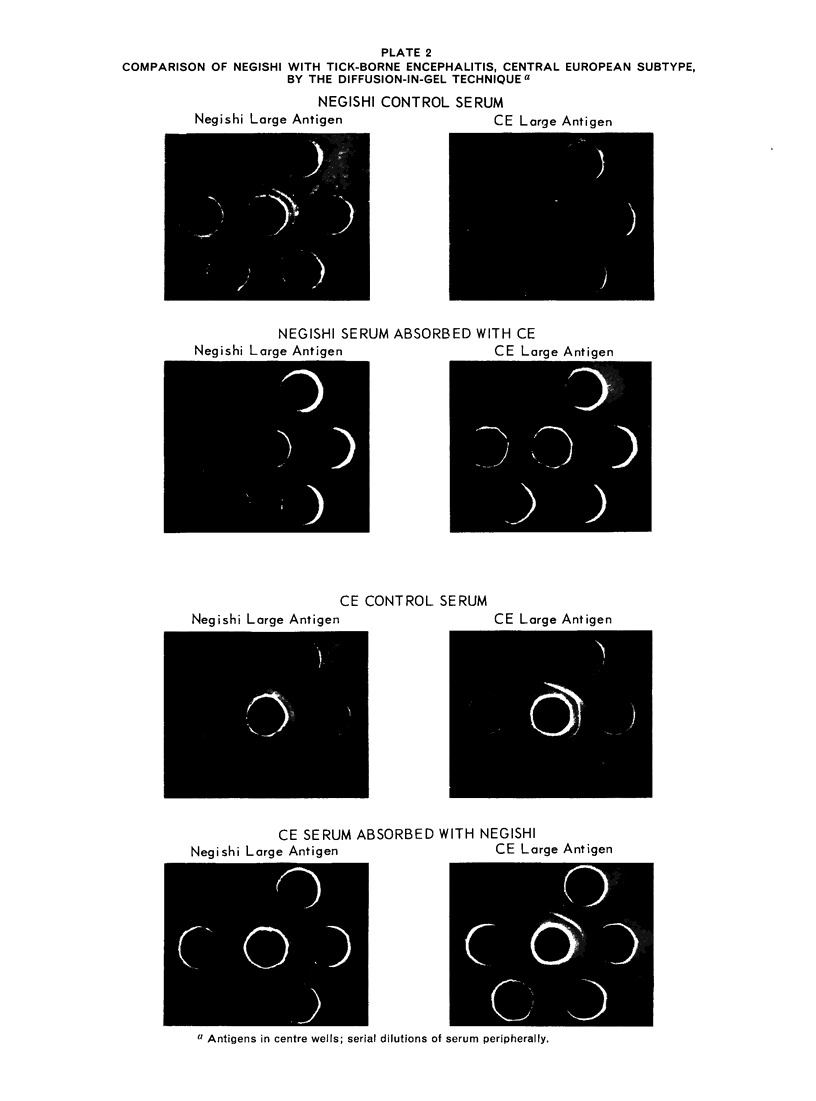
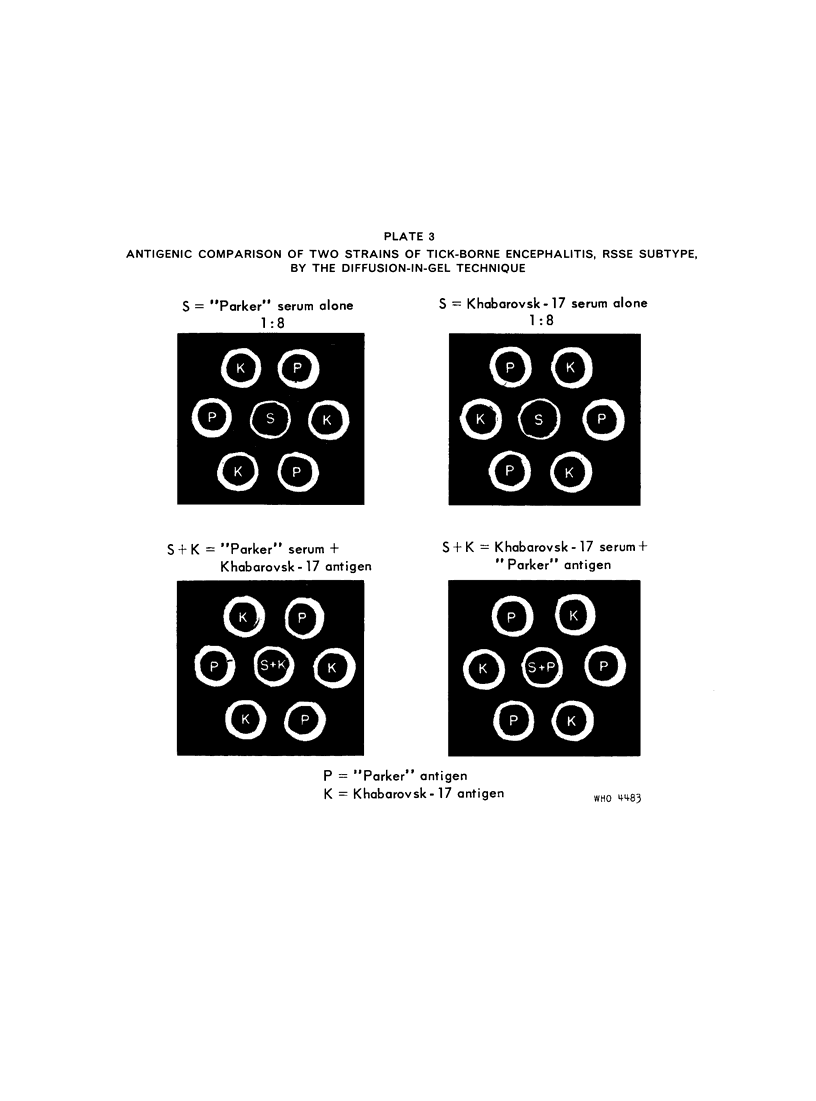
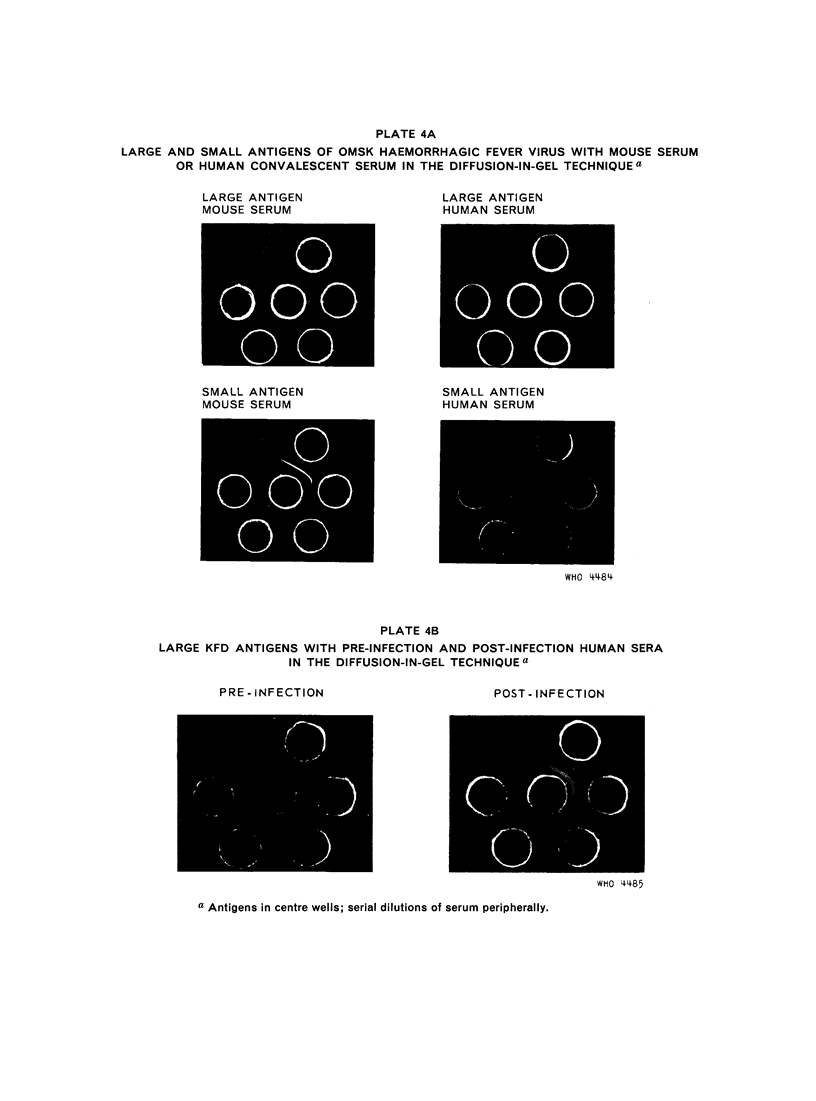
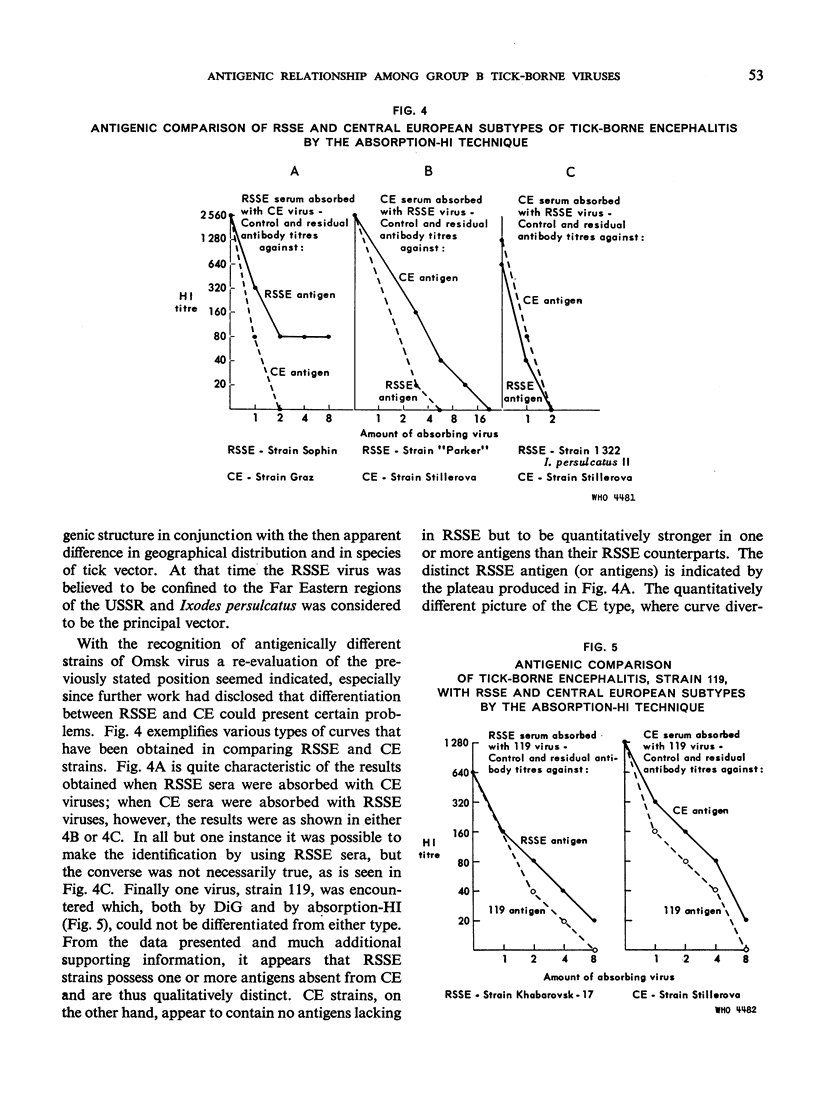
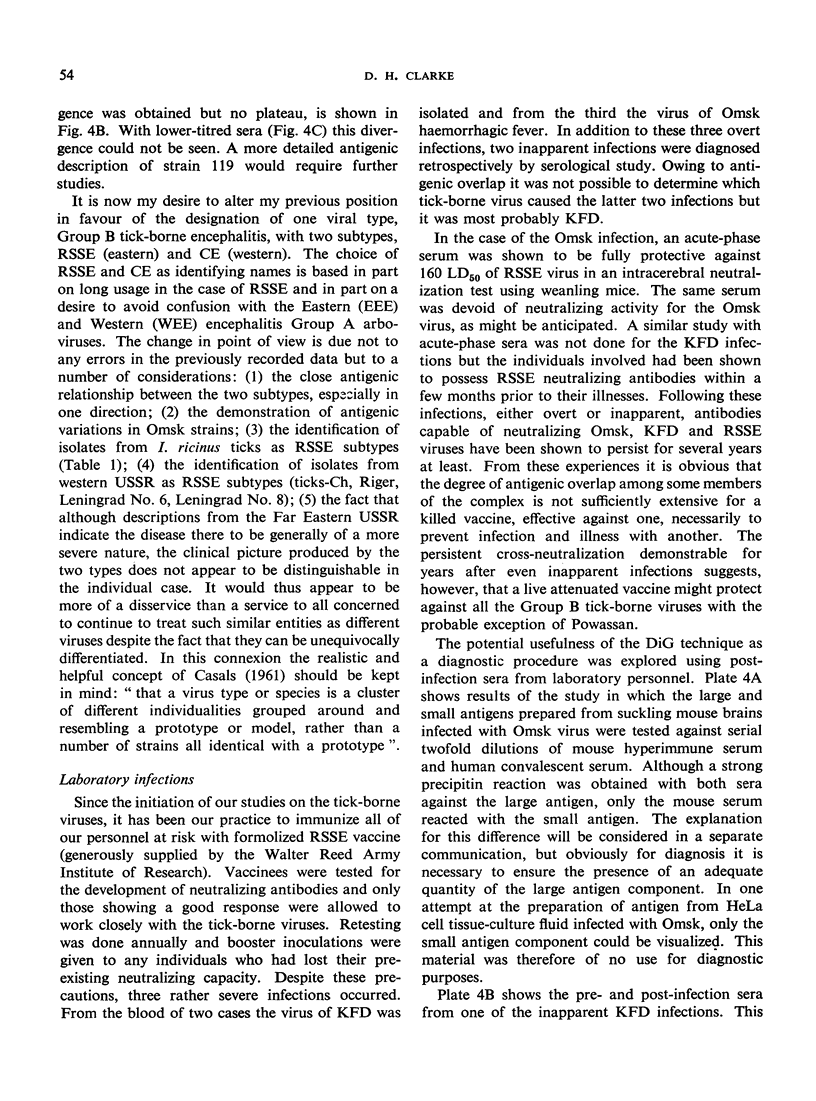
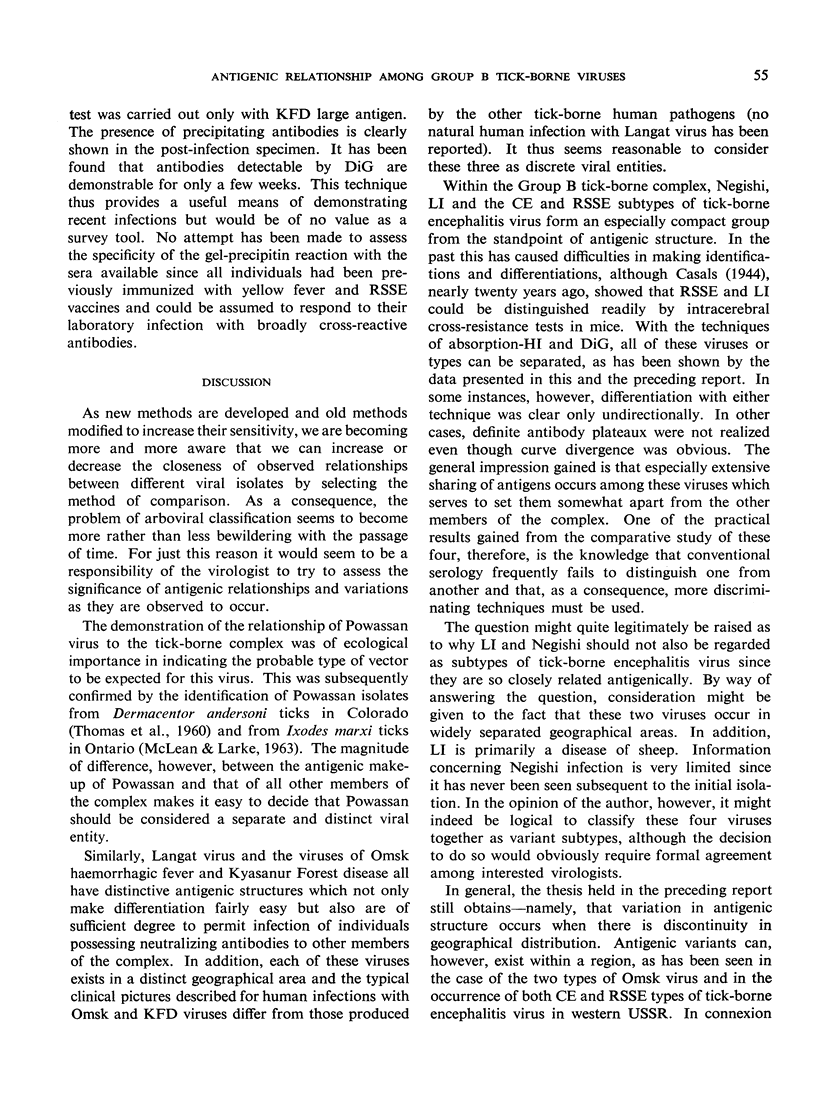
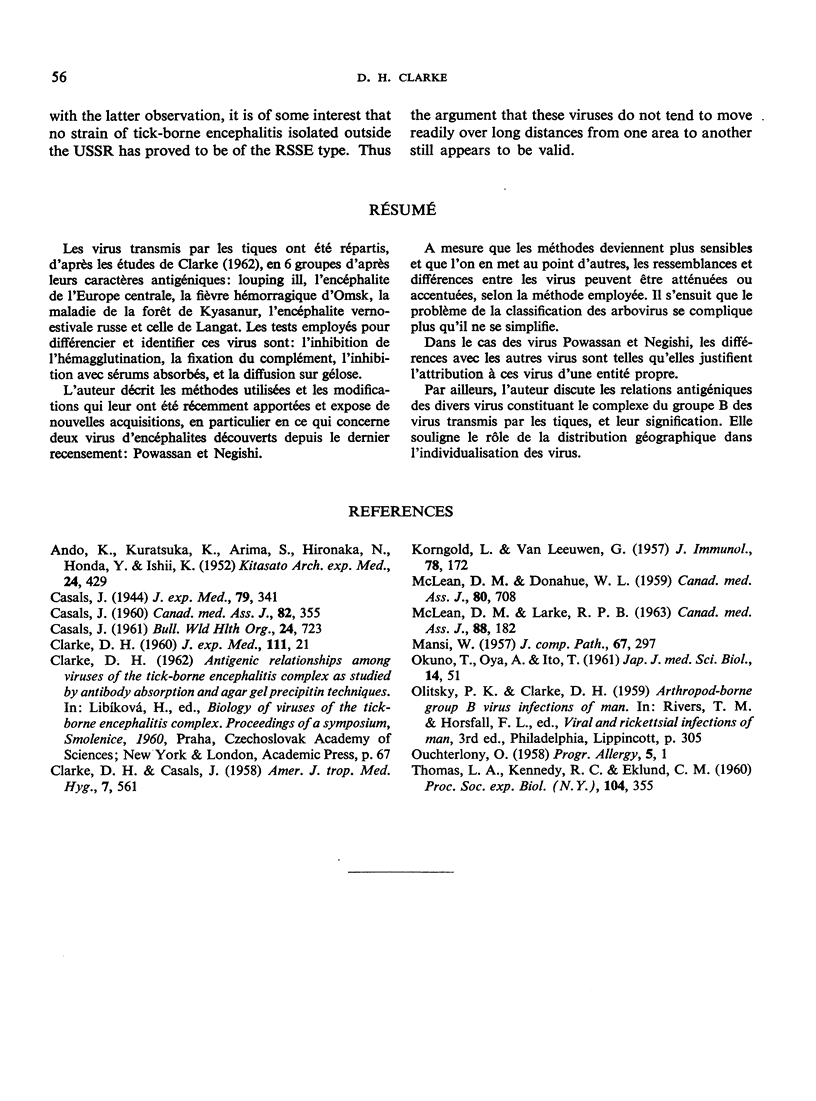
Images in this article
Selected References
These references are in PubMed. This may not be the complete list of references from this article.
- CASALS J. Antigenic relationship between Powassan and Russian spring-summer encephalitis viruses. Can Med Assoc J. 1960 Feb 13;82:355–358. [PMC free article] [PubMed] [Google Scholar]
- CASALS J. Procedures for identification of arthropod-borne viruses. Bull World Health Organ. 1961;24:723–734. [PMC free article] [PubMed] [Google Scholar]
- CLARKE D. H. Antigenic analysis of certain group B arthropodborne viruses by antibody absorption. J Exp Med. 1960 Jan 1;111:21–32. doi: 10.1084/jem.111.1.21. [DOI] [PMC free article] [PubMed] [Google Scholar]
- CLARKE D. H., CASALS J. Techniques for hemagglutination and hemagglutination-inhibition with arthropod-borne viruses. Am J Trop Med Hyg. 1958 Sep;7(5):561–573. doi: 10.4269/ajtmh.1958.7.561. [DOI] [PubMed] [Google Scholar]
- Casals J. IMMUNOLOGICAL RELATIONSHIPS AMONG CENTRAL NERVOUS SYSTEM VIRUSES. J Exp Med. 1944 Apr 1;79(4):341–359. doi: 10.1084/jem.79.4.341. [DOI] [PMC free article] [PubMed] [Google Scholar]
- KORNGOLD L., VAN LEEUWEN G. The effect of the antigen's molecular weight on the curvature of the precipitin line in the Ouchterlony technic. J Immunol. 1957 Mar;78(3):172–177. [PubMed] [Google Scholar]
- MANSI W. The study of some viruses by the plate gel diffusion precipitin test. J Comp Pathol. 1957 Jul;67(3):297–303. doi: 10.1016/s0368-1742(57)80029-0. [DOI] [PubMed] [Google Scholar]
- MCLEAN D. M., LARKE R. P. Powassan and Silverwater viruses: ecology of two Ontario arboviruses. Can Med Assoc J. 1963 Jan 26;88:182–185. [PMC free article] [PubMed] [Google Scholar]
- McLEAN D. M., DONOHUE W. L. Powassan virus: isolation of virus from a fatal case of encephalitis. Can Med Assoc J. 1959 May 1;80(9):708–711. [PMC free article] [PubMed] [Google Scholar]
- OKUNO T., OYA A., ITO T. The identification of Negishi virus, a presumably new member of Russian spring-summer encephalitis virus family isolated in Japan. Jpn J Med Sci Biol. 1961 Apr;14:51–59. doi: 10.7883/yoken1952.14.51. [DOI] [PubMed] [Google Scholar]
- OUCHTERLONY O. Diffusion-in-gel methods for immunological analysis. Prog Allergy. 1958;5:1–78. [PubMed] [Google Scholar]
- THOMAS L. A., KENNEDY R. C., EKLUND C. M. Isolation of a virus closely related to Powassan virus from Dermacentor andersoni collected along North Cache la Poudre River, Colo. Proc Soc Exp Biol Med. 1960 Jun;104:355–359. doi: 10.3181/00379727-104-25836. [DOI] [PubMed] [Google Scholar]



